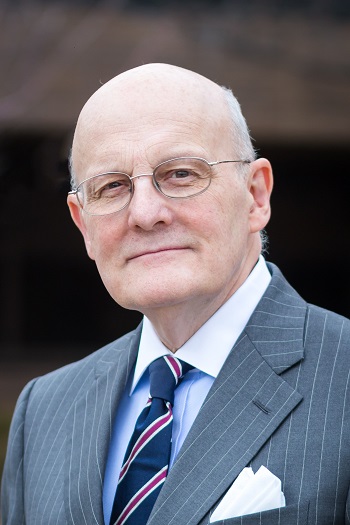
By Professor Christopher P. Woehrle, J.D., LL.M
“In the United States, as soon as several inhabitants have taken an opinion or an idea they wish to promote in society, they seek each other out and unite together once they have made contact. From that moment, they are no longer isolated but have become a power seen from afar whose activities serve as an example and whose words are heeded.” (Tocqueville, Democracy in America, 1840, 599).
With the COVID vaccinations steadily increasing and the imminent return of spring, there is a reason for optimism. From our early days, Americans have been problem solvers.
Philanthropy’s response of an estimated $20.2 billion to COVID-19 recovery in 2020 surpassed giving to any other natural disaster in recent memory. Some grant makers dropped a wide range of restrictions they typically impose on their grantees to provide operating funds.
Waves of charitable momentum and reform have inspired “associations” to promote new ideas like the Initiative to Accelerate Charitable Giving (Initiative). As a coalition of leading philanthropists, such as Seth and Beth Klarman, and influential foundations, such as Kellogg, Kresge and Ford, the Initiative is embarking on a notable mission to unleash “significant private sector resources sitting in philanthropic vehicles that could be used to support charities and the millions of people they serve.”
There is currently an estimated $1 trillion set aside in various charitable vehicles that could support operating charities. The COVID-19 crisis and the priority to address matters of racial justice have created unprecedentedly high need. The status quo of how to give merits a reappraisal.
Reforms for all
The Initiative aims not only to unleash greater giving by the most capable, but also to democratize it through the extension of the non-itemizer deduction available for gifts of cash to public charities. DAFs and private foundations would continue to be ineligible. It would also recommend a 1% to 2% floor of AGI to encourage giving and minimize fraud.
Reforms of private foundations
To accelerate distributions from private foundations into the accounts of charities, payment of salaries and travel expenses of family members would not count toward the 5% distribution requirement. Nor would distributions to DAFs, which presently have no minimum distribution requirement.
Private foundations paying 7% or more in a year would be exempt from the 1% excise tax on investments. The excise tax also would be eliminated for newly created foundations with a limited existence of 25 years or fewer.
Reforms of DAFs
Notwithstanding that an estimated 16% of all DAFs distribute all their funds in 12 months, the remaining 84% are under no legal requirement to make any payout. The average payout rate of 20% ignores the reality of DAFs being distributed to other DAFs. The Initiative proposes a linkage between the nature of the tax benefits with the time of distribution to charity. For example, if funds were distributed no later than 15 years from the donation to the DAF, there would be an immediate deduction. To eliminate vexing valuation questions of illiquid real estate or privately held stock, the deduction would be based on available cash.
Those donors needing more than 15 years to distribute their DAF funds should be allowed to elect an “aligned benefit rule.” While the appreciated asset would be removed from the estate without triggering capital gains, the income tax deduction would be deferred until actual distribution to charity. This rule would address the “84%” problem and would create an incentive for donors to get donations to charities sooner. The “penalty” for delay would be a deferred deduction which, in fact, would be “less” after considering the time value of money. Additionally, these funds would be required to be distributed outright to charities no later than 10 years after the death of the donor.
The unprecedented need in America will compel Congress to reassure itself that all the lost tax revenue from the charitable incentives are, in fact, benefiting society sooner. The Initiative’s proposals are intriguing and less onerous than other possible reforms, such as a mandatory payout of 10%. The Tax Cuts and Jobs Act of 2017 ’s tax on multi-billion-dollar endowments shows congressional impatience with large sums accumulating without doing good.
 Christopher P. Woehrle is professor and chair of the tax & estate planning department at the College for Financial Planning in Centennial, Colorado. As one of Sharpe Group’s technical advisors, Chris is a frequent contributor to Sharpe Insights and authors Sharpe Group blogs.
Christopher P. Woehrle is professor and chair of the tax & estate planning department at the College for Financial Planning in Centennial, Colorado. As one of Sharpe Group’s technical advisors, Chris is a frequent contributor to Sharpe Insights and authors Sharpe Group blogs.

